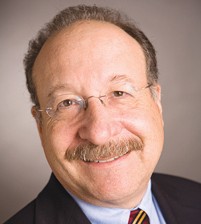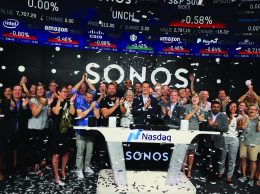
Henry Dubroff
Santa Barbara’s waterfront will get its newest crown jewel early next year when MOXI makes its debut.
MOXI – officially the Wolf Museum of Exploration + Innovation – benefits from the latest thinking in active learning, strong leadership and the philanthropic capacity that very few communities can deliver.
During a recent walk through the nearly completed museum it also became obvious that President and CEO Steve Hinkley and his staff have been forging strong ties to companies at the core of our innovation culture on the Central Coast.
First, a bit of history. MOXI was conceived as the Children’s Museum of Santa Barbara in 1990 and secured a city of Santa Barbara-owned location at 125 State St. near the Amtrak station.
Typical of the boom-bust cycle that’s defined waterfront development through the centuries, the museum remained mainly a dream until Hollywood producer Dick Wolf of “Law and Order” fame reinvigorated the project with a major grant that anchored a $25 million fundraising effort for the building and an endowment.
After a fundraising blitz, the campaign is well past the $20 million mark and headed for completion this year. The 25,000-square-foot museum designed by the late Barry Berkus and completed by the A+B Design Studio will be open to the public in late January.
What Wolf and his wife Noelle also brought to the table was a vision for connecting the museum to the emergence of STEAM – science, technology, engineering, arts and math – as powerful drivers of the educational experience.
STEAM-based learning has caught on at the Exploratorium in San Francisco and other museums around the country and MOXI will benefit with flexible floor designs, maker spaces equipped with 3-D printers and the ability to customize exhibits to introduce students and adults to new concepts in vision, sound and virtual reality.
Area companies, including Santa Barbara-based Sonos, have lent their expertise to audio experimentation gear. A Goleta-based unit of FLIR Systems has provided components to create a display that captures the fingerprint signatures of attendees and UC Santa Barbara is building a model of its Allosphere virtual environment for data and other visualization on the second floor.
When I chatted with him on the phone on Dec. 15, Hinkley said that reaching out to innovation-driven companies was a natural fit for MOXI’s vision. “They were pretty much low-hanging fruit for us,” he said. Partnering with MOXI allows them to “promote their process of innovation,” provide volunteer staff for exhibits and expose a new generation of kids to careers in science and technology fields.
The concept behind MOXI is to think about what’s next and provide visitors with an experience that, as Hinkley put it, “doesn’t ever feel stale.” Hinkley is a respected curator who developed the Perot Museum of Nature and Science, a $190 million project in the Dallas area, before moving to Santa Barbara.
One of the region’s undervalued assets, Hinkley said, is the technological prowess that covers a range of fields. MOXI can help address that by exposing an estimated 100,000 visitors a year to the best that the region has to offer.
“We are literally changing the world,” he said.
Connecting with small businesses and nonprofits also matters. Chicken Little, a local boutique, will run the museum store and public spaces within the building will be open to community events.
When it opens next year, MOXI will be part of an evolving South Coast waterfront that will include the new Californian, formerly the La Entrada hotel and retail project, revamped creek channels, Rick Caruso’s new Rosewood Miramar hotel in Montecito and, eventually, a Parker family boutique hotel on Cabrillo Boulevard.
Traditional children’s museums also will get a bump in visibility with a revamped Santa Maria facility and a project on the drawing boards in Thousand Oaks.
Hinkley said it didn’t take much to persuade him to leave Texas for the Central Coast. “It’s hard to say how unique this type of opportunity is,” Hinkley said.
In addition to a board with tremendous fundraising clout, what makes the difference, he said, is the “extreme depth of talent and innovative technology.”
• Reach Editor Henry Dubroff at hdubroff@pacbiztimes.com.






 Print
Print Email
Email

















